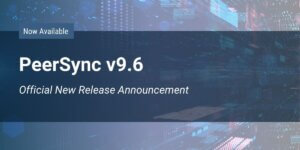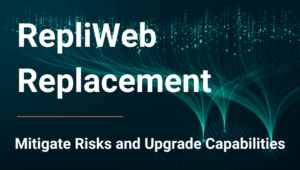Across industries, companies harness the power of data to gain valuable insights that help leaders make informed decisions and find fresh, new ways to meet the evolving needs of their customers. The challenge lies in managing the massive amounts of data collected, so it can be utilized efficiently and to its full potential. In this enterprise data management article, Peer Software defines what data fabric is and discusses how it can benefit your organization.
What Is Data Fabric?
Data fabric is not a single tool – it’s a technology concept and a marketing term for storage management solutions. It fosters a seamless user experience across an organization, providing easy access to data in real-time. Data fabric is made up of several components, including architecture, data management and integration software, and shared data.
You may hear this concept defined in many ways and by many different companies within the industry. Here are a few different perspectives from storage solution companies on what the term “data fabric” means:
NetApp
According to NetApp, data fabric is an architecture and set of data services that provide consistent capabilities across endpoints that span hybrid multi-cloud environments. It sees data fabric as adaptive, flexible, and secure, balancing the best of the cloud, core, and edge. NetApp breaks down this concept into six key pillars:
- Discovery
- Automation
- Optimization
- Integration
- Protection
- Security
IBM
For IBM, data fabric is an innovative alternative to data silos and an architectural approach to data simplification. It automates recovery, governance, and consumption, maximizing an organization’s ability to use data to its advantage. Enterprises can access the business-ready data they need, when they need it, no matter where it’s stored. Taking a holistic approach, it lets users do the following:
- Proactively manage data reliability for trusted outcomes
- Automate data governance and security
- Integrate data across any cloud, increasing availability
- Create a 360° view of customer data, providing deeper insights
- Automate artificial intelligence (AI) governance
Nutanix
At Nutanix, data fabric is designed to take the complexity out of the cloud. It’s driven by performance, resilience, and scalability and is suited for all applications and workloads. It seamlessly balances cloud infrastructure and multi-cloud management, with unified storage, database services, and desktop services.
Microsoft Azure
Microsoft Azure service fabric helps enterprises solve challenges around management, reliability, scalability, and latency. An open-source project, this type of service fabric fuels several Microsoft solutions, such as Azure Event Hubs, Azure Data Factory, Azure Cosmos DB, Azure SQL Database, Skype for Business, and Cortana to suit varying business needs.
Why Is Data Fabric Important?
Data fabric helps enterprises become more agile, fostering growth and innovation. Any user across any point in the fabric can take raw data and use it to gain valuable insights. It’s ideal for geographically diverse organizations, as well as those with multiple data sources and complex issues. When implemented successfully, this architecture has the potential to transform a business.
Benefits of Data Fabric
Modern challenges require modern solutions such as data center synchronization, which derives benefits from a well-crafted and properly deployed data fabric, including:
- Scalability: Companies can align and leverage dynamic, large-scale data environments to meet changing needs.
- Accessibility: It supports all data access modes, sources, and types. It also integrates master and transnational data.
- Integration and distribution: Integrated systems are easier to access. Data fabric unifies structured and unstructured data from on-premise, cloud, and hybrid platforms.
- Security: Data fabric solutions can meet privacy regulations and provide an extra layer of protection that mitigates cyber attacks, protecting sensitive information and helping businesses maintain compliance.
- Governance: Organizations can create unified protocols that work across all data systems.
Enterprise Needs for Multiple Storage Platforms
Many enterprises use more than just a single storage platform. But why? Different storage solutions have different performance benefits that companies find valuable in their own way. For example, a company may use Nutanix for all its virtual desktop infrastructure (VDI) data and end-user docs. Or they may use Dell Isilon for fast and large data developments.
One solution may not cover all company needs. Plus, the storage solution must also make sense in terms of cost. For instance, no business would put a Dell Isilon/PowerScale storage system at a remote office site with just five employees working in Microsoft Word – that would be a waste of resources. A Windows File Server would be better suited for that scenario. However, a Dell Isilon/PowerScale or NetApp system would be ideal for several scientists running a genome sequencing project. The cost makes sense for the performance characteristics needed.
Our Multi-Vendor and Multi-Cloud Solution
Partner with our team at Peer Software to gain a more unified experience and create a data fabric across all the established storage systems your company currently supports. PeerGFS is the distributed file system we’ve designed for data-centric enterprise customers with several offices, storage vendors, and/or hybrid multi-cloud storage infrastructure. While some software companies require customers to adopt their proprietary file system and namespace, we work with your existing on-premise storage investments.
Let us be your guide for enterprise data management. Contact us for more information about PeerGFS or request a trial today.
With more than three decades of tech industry experience, Kevin has served in a variety of technical, sales, marketing, and alliance related roles while following an entrepreneurial approach for launching new solutions and expanding their reach.
- This author does not have any more posts.







